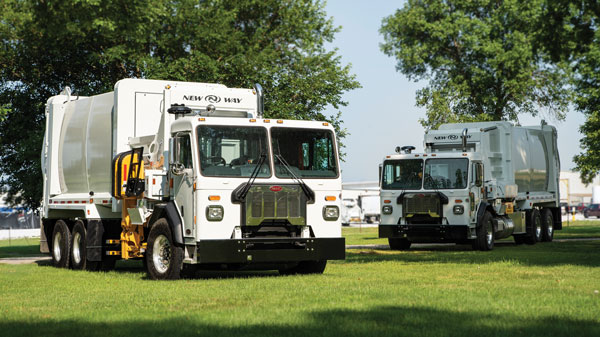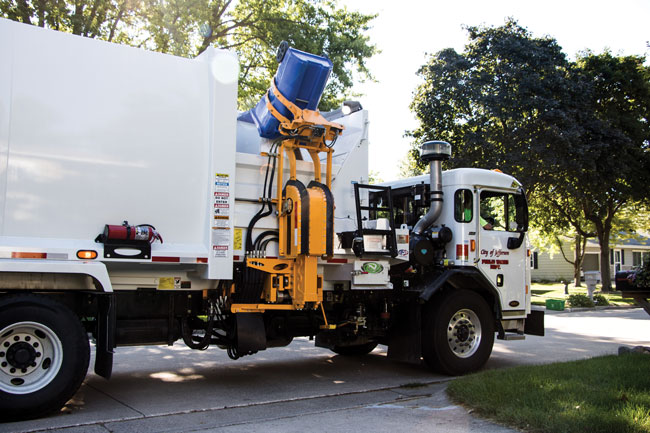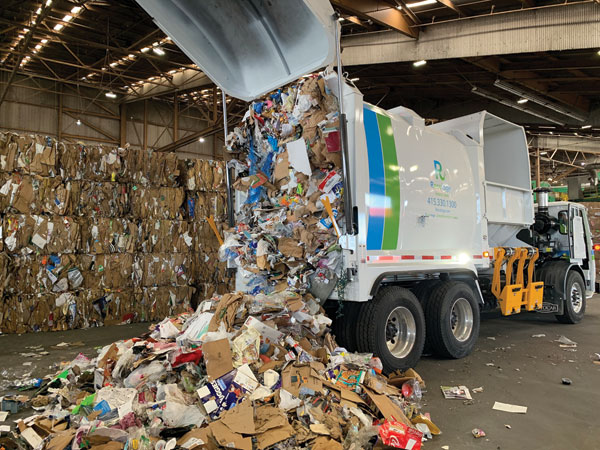Transitioning to automated collection has never been easier than it is right now. Today’s fully-automated side-loaders come equipped with fully digital platforms and tools, plus, a full complement of safety equipment make our vehicle operators’ jobs safer and more productive than ever before.
By Don Ross
Nationwide, waste haulers saw dramatic increases in residential waste volumes as a result of various safe-at-home measures across the U.S. The COVID-19 pandemic and its direct impact on higher residential waste volumes brought automated refuse collection to the forefront of fleet managers’ minds, again.
It is no secret that the men and women on the front lines of our industry put themselves in harm’s way each day, providing a vital health and human service. Organized waste collection was started nearly 130 years ago to eliminate the spread of vectors and illness, and today plays a vital role in keeping us safe from infection and disease. But this is a dangerous job, and although the industry’s safety record is improving, waste collection is still one of the 10 deadliest professions.

The origins of automated waste collection are well documented and the industry’s shift towards it has proven to reduce injuries and provide a higher level of customer service for our waste generators. Communities across the country continue their plans to convert to automation but during the pandemic it again became a high priority as cities and towns focused on methods to prevent the transmission of the virus and to generally improve community hygiene.
Fortunately, transitioning to automated collection has never been easier. Today’s automated side-loaders (ASLs) come equipped with fully digital platforms with remote diagnostics, real-time global positioning, full customer service data integration, 360-degree cameras, proof of service tools, and a full complement of safety equipment which makes our vehicle operators’ jobs safer and more productive than ever before.
More Safety, Less Contact
In addition to improving service, automation provides several safety and health benefits, and data has shown that automated waste collection significantly reduces injuries by eliminating heavy lifting while keeping operators in a climate-controlled cab away from traffic. Slips, trips, and falls, the number one cause of worker injury is also further reduced as a result of not having to climb on and off riding steps, further contributing to the positive data. This prolongs the careers of an aging workforce while also mitigating the risks posed when riding on or working behind a traditional rear-loader.
In today’s climate, automated collection vehicles have another notable benefit: automation reduces contact with the waste stream to nearly zero. Couple that with a single vehicle operator as well as the speed at which automated side-loaders collect solid waste and you are helping to control the spread of disease and illness while providing the most visible municipal service there is.

Jefferson, Iowa. This unit launched Jefferson’s automated collection program.
Operator Needs
Shifting to automation has further proven to extend an aging workforce while at the same time being a gender-neutral role, creating access to more commercial drivers in a time when driver shortages are widespread. In the current labor market, it is incredibly important to provide stable opportunities to as wide of a selection set as possible. Given the CDL driver shortage, expanding the labor pool and drawing candidates from groups not traditionally targeted by the nation’s waste haulers continues to gain steam.
National Waste & Recycling Workers week, celebrated each year the week of June 17, highlights the remarkable men and women who do essential work daily to keep our neighborhoods and streets safe and clean. Our nation’s garbage collectors do not have the luxury of working from home. Automated refuse trucks go a long way to ensure that the brave men and women who assure that our waste is disposed of safely return home to their families at the end of each day.

Navigating Tight Spaces
In just 50 years we have gone from the City of Scottsdale’s automated prototypes to fully-automated battery-electric collection vehicles with no shortage of innovation in between. Select front-loaders can be considered automated, but the popularity of fully- automated side loaders has exploded in the past decade. ASLs are ideal for residential collection routes and feature strong, frame-mounted arms, compaction rates that rear and front loaders simply cannot match, allow for operational flexibility, and can be fueled with compressed natural gas and battery-electric power.
The operational benefits of ASLs include productivity improvements given there is no need to be in and out of a truck hundreds of times per route. ASLs are able to navigate dead ends, alleys and one-way streets with ease. Some semi-automated collection trucks even come equipped with dual-sided cart-tippers to allow for loading from either side of the street. This makes for more efficient routes in residential neighborhoods with lots of on-street parking. Automated collection also allows haulers to more consistently manage waste volumes due to the uniform size of carts.
Shift to Automation
People may not be aware that refuse collection began over 130 years ago to prevent the spread of infection. The COVID-19 pandemic only accelerated a waste collection trend that was already well underway. The shift to automation continues to gain momentum, and fleet managers across the country are well aware of the benefits and peace of mind that automated collection provides. | WA
Don Ross is Vice President of Sales and Marketing for New Way Trucks & McLaughlin Family Companies. He dedicates his work to advancing the science of waste collection to increase efficiencies, improve safety, and enhance recycling and waste diversion using new technologies. As VP, Don leads the brand management and sales efforts for McLaughlin Family Companies, including its New Way Trucks, K-PAC Compactor, and FleetForce Rental refuse brands and fulfills a key role in the planning and design of new refuse collection equipment. He has more than 30 years of experience in the solid waste industry managing collection and transfer operations for organizations in both the public and private sectors. Don can be reached at (712) 652-3396 or by e-mail at [email protected].
